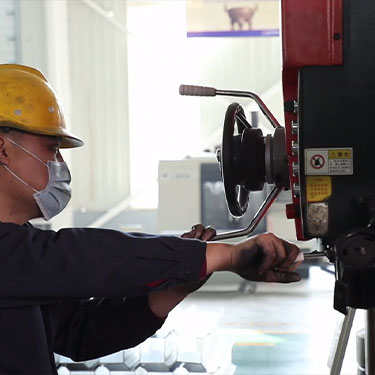
Nov . 09, 2024 13:02
Back to list
Safety Relief Valve for Gas Systems to Prevent Overpressure
Safety Relief Valves The Crucial Role in Gas Systems
Safety relief valves play a crucial role in maintaining the safety and integrity of gas systems. These specialized valves are designed to automatically release excess pressure in a system, thereby preventing catastrophic failures, explosions, and other dangerous situations that can arise when gases are involved. Understanding the importance, functionality, and application of safety relief valves is essential for anyone involved in gas-related industries or applications.
Importance of Safety Relief Valves
Gas systems, whether they are industrial, commercial, or residential, operate under varying pressures. When operating within the designed pressure range, the system runs safely and efficiently. However, several factors—such as equipment malfunction, blockages, or sudden temperature changes—can lead to an increase in pressure beyond safe limits. Without a mechanism to relieve this pressure, the integrity of the system is compromised, which could lead to leaks or explosions.
Safety relief valves serve as the first line of defense against such occurrences. By automatically venting excess pressure, these valves ensure that the pressure remains within a safe range, protecting not only the equipment but also the lives of individuals in the vicinity.
Functionality of Safety Relief Valves
Typically, safety relief valves are spring-loaded devices that open when the internal pressure exceeds a predetermined limit. The basic principle of operation is relatively straightforward when the pressure increases to a certain threshold (the setpoint), the force exerted by the gas on the valve's diaphragm or seat overcomes the spring tension, thus allowing the valve to open and release the excess pressure.
After the pressure in the system drops back to a safe level, the spring pushes the valve seat closed, stopping the gas flow. This automatic operation means that safety relief valves can respond almost instantaneously to dangerous pressure increases, minimizing the risk of accidents.
.
There are several types of safety relief valves, each suited to specific applications.
صمام تنفيس أمان الغاز

1. Spring-Loaded Relief Valves These are the most common type and operate as described above. They are versatile and can be used in various gas and liquid systems.
2. Pilot-Operated Relief Valves These valves use a smaller pilot valve to control the opening of a larger main valve. They can provide more accurate control and are often used in systems where precise pressure regulation is required.
3. Bursting Discs While not strictly a valve, bursting discs are used in some gas systems as a pressure relief device. They are designed to rupture at a specific pressure, instantly relieving pressure but requiring replacement after activation.
Applications of Safety Relief Valves
Safety relief valves are found in a wide variety of applications across numerous industries. In the oil and gas sector, they protect pipelines and refineries from pressure surges. In residential settings, they are crucial components of gas boilers and water heaters. Additionally, they are used in chemical processing plants, power generation facilities, and even food processing operations where pressurized gases are involved.
Maintenance and Inspection
Ensuring that safety relief valves are functioning correctly is vital for the safety of any gas system. Regular maintenance and inspection should be scheduled to check for signs of wear, corrosion, or malfunction. Operators should be educated on the importance of these valves, and training programs should be in place to ensure all personnel understand how they work and the consequences of failure.
Conclusion
In summary, safety relief valves are indispensable components of gas systems, operating silently but effectively to ensure safety and prevent disaster. Understanding their function and significance can greatly influence the overall safety practices within any industry that relies on gas. By maintaining these valves and ensuring they are operating correctly, industries can prevent dangerous situations, protect their operations, and prioritize the safety of their personnel and the public. Investing in safety relief valves is not just about compliance; it's about adopting a culture of safety that values human life and environmental protection above all.
Latest news
-
Safety Valve Spring-Loaded Design Overpressure ProtectionNewsJul.25,2025
-
Precision Voltage Regulator AC5 Accuracy Grade PerformanceNewsJul.25,2025
-
Natural Gas Pressure Regulating Skid Industrial Pipeline ApplicationsNewsJul.25,2025
-
Natural Gas Filter Stainless Steel Mesh Element DesignNewsJul.25,2025
-
Gas Pressure Regulator Valve Direct-Acting Spring-Loaded DesignNewsJul.25,2025
-
Decompression Equipment Multi-Stage Heat Exchange System DesignNewsJul.25,2025

